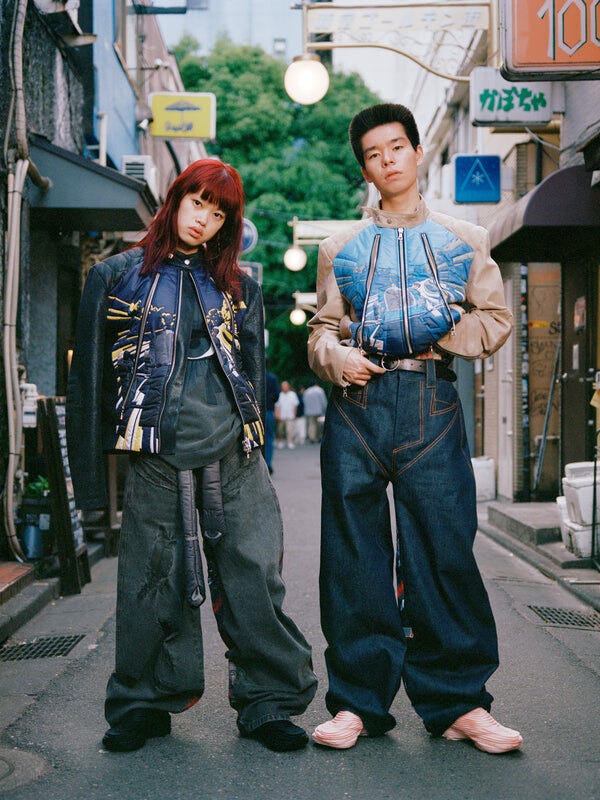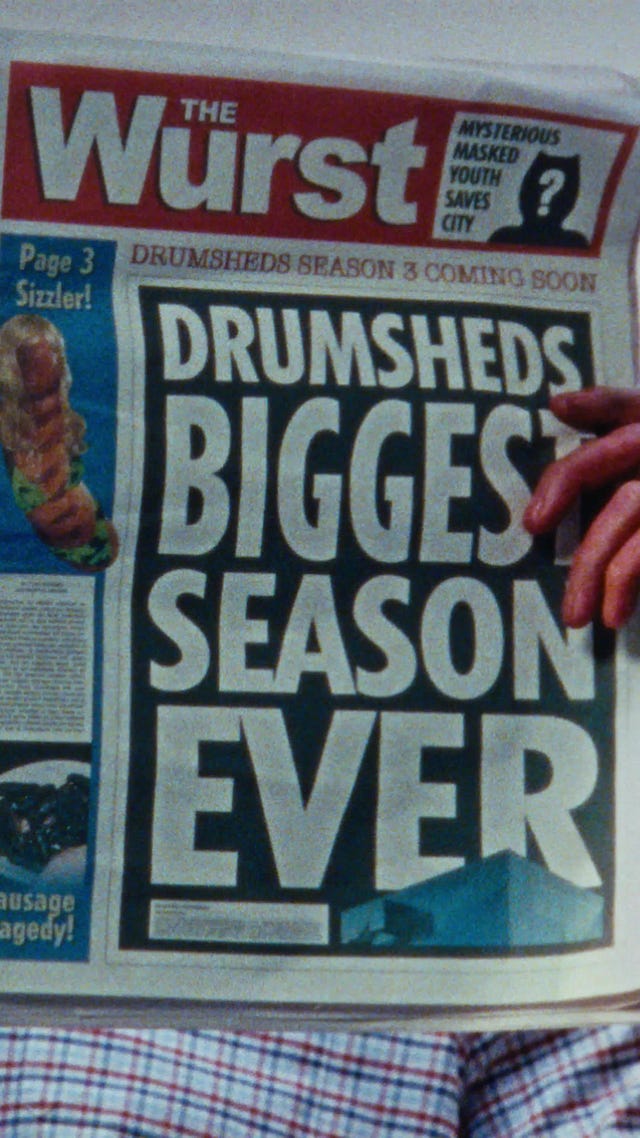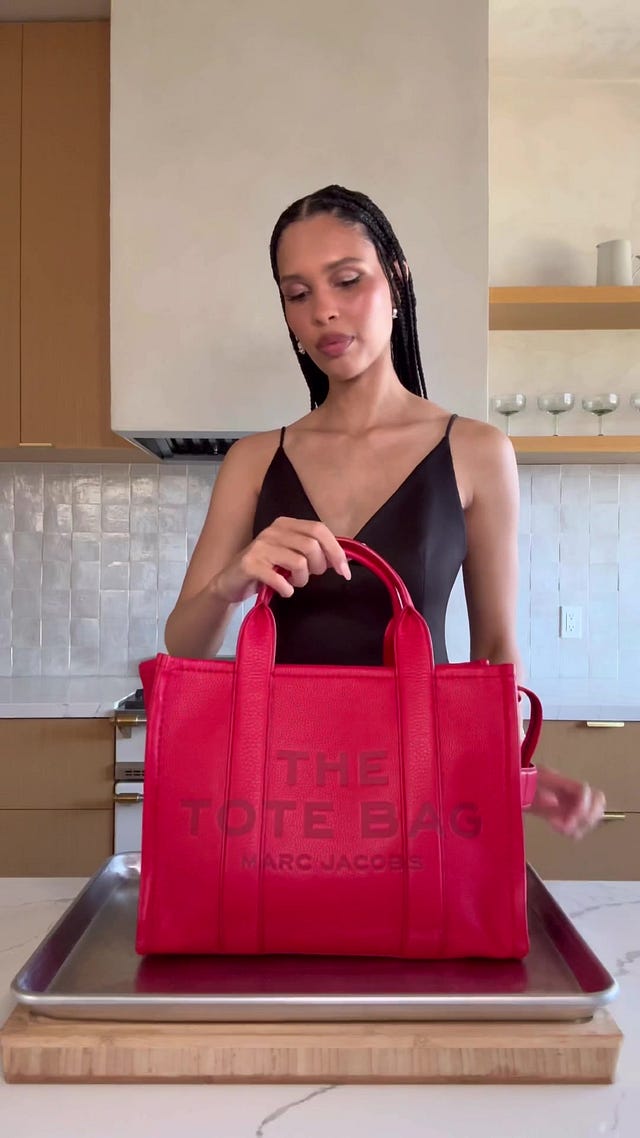What does the social content of today tell us about what it means to entertain and to advertise? Well, according to the resurgence of lofi, imperfect, yet immediately eye catching social content, quite a bit. As brands like Drumsheds, MSCHEF, Marc Jacobs, and House of Errors embrace an ‘entertain or die’ mantra, we are seeing a shift towards prioritising humour and unpolished social content, with high aims to captivate an extremely, chronically online audience. These brands, and a few other examples we’ll walk through, understand that entertainment first content isn’t just about selling a product, it’s about creating bizarre, wonderful, immersive, yet slightly confusing (or packed with ‘lore’ of online social trends) experiences that captivate viewers. They stand as an antidote to overly-curated, hyper-stylised content that seeks to masquerade authenticity rather than embody it; something so fixated on viewing their audiences as just a consumer rather than a part of a wider community feel. In this article, we explore how this lofi, attention grabbing advertising cuts through the noise, and how young people came to perceive this as great marketing.
Vogue Business recently highlighted this shift in an article titled "Gen-Z Broke the Marketing Funnel." They explored how Gen-Z’s interaction with online content has evolved, gravitating towards the quirky and the unconventional. This generation's exposure to a vast array of brands and advertisements means that standing out requires more than just flashy visuals. It's about creating something genuinely engaging amid the digital noise. According to their research, 54% of Gen-Zs say that their favourite brands are the ones that make them feel like they’re part of a community. In other words, younger people want to feel a part of a cool brand that engages with them far more than just being a product. Sure, Rhode Beauty, for example, is just another skincare/makeup brand at the end of the day, but their online presence feels more encompassing, it feels bigger and cooler. And, with 84% of this audience saying they’re more likely to purchase from brands they think are “cool,” universe building is incredibly important when winning over new ‘brand-fans.’
54% of Gen-Zs say that their favourite brands are the ones that make them feel like they’re part of a community (Vogue Business).
Platforms like TikTok have shifted the paradigm to demote polished, traditional advertising as lame and overdone. Today’s consumers, particularly younger generations, are super tapped into what advertising looks like; They grew up with algorithms and influencers who constantly promoted products, and they have a keen nose for authenticity. If Gen-Z has to be advertised to, at least make it engaging and entertaining. It’s not enough to say “our product does this” or “our brand stands for this,” brands need to create a world that invites interaction.
Even in mass media, I simply must take it back to a place of Charli XCX’s brat (I did say last month I was a superfan…). Brat’s rollout thrived on self-referential humour from niche, chronically online parts of the internet, embracing imperfections over perfect curation, and honestly was just fun and cool (sorry, that’s not very intellectual, but read here why I think this!). Additionally, irreverent and self-referential humour in films like Deadpool and Wolverine tapped into chronically online audiences, and it’s saying a lot that a Marvel film would embrace some sort of ‘imperfection.’ Chronically online audiences crave referential humour with an absurdist twist. Brands that can tap into this vibe, creating shareable, non-serious content, often find themselves rewarded with engagement and loyalty.
It’s not enough to say “our product does this” or “our brand stands for this,” brands need to create a world that invites interaction.
Drumsheds, additionally, is a masterclass in this new wave of marketing. It’s entertainment-first and shareable, with the actual product details presented as a reward for the audience's engagement. This approach is akin to modern-day club posters, where the primary goal is to sell a vibe before revealing the specifics. The tagline "BIG JUST GOT BIGGER" encapsulates this strategy—bold, engaging, and slightly cryptic, prompting curiosity and interaction. What Drumsheds did was silly, it was sort of stupid, yet still engaging. A not too overly constructed idea showcased their venue, but instead of telling audiences the bullet-pointed benefits of their space, they created an engaging world to be experienced, enjoyed and most importantly, shared.
 Tiktok failed to load.
Tiktok failed to load.Enable 3rd party cookies or use another browser
Gen-Z's content consumption habits pose a challenge for brands. According to Archrival, 80% of Gen-Z feels they are exposed to more brands and advertising than any other generation. With Tik-Tok heralding content that isn’t overly polished or salesy, brands need to find creative ways to authentically engage audiences, while doing so in a way that audiences can relate to. Retailers are increasingly acting like media companies, and vice versa. Half Magic, a makeup line born from a collaboration between film studio A24 and makeup artist Doniella Davy, exemplifies this trend. By integrating their product into the cultural zeitgeist, such as through makeup looks inspired by the film "Priscilla," they create a buzz that transcends traditional advertising.
Today's marketing reflects a generation with different priorities and influences. Gen-Z is drawn to the bizarre and the standout. Their humour, often referred to as "brainrot humour,” and earlier millennial humour rooted in "so random xD" culture, highlights a preference for content that doesn't necessarily make sense but captivates nonetheless. Much of this engaging content is shot on iPhones or similarly low-budget alternatives. While these campaigns may seem unpolished, they are often meticulously crafted to resonate with younger audiences' taste for the absurd and authentic. This lofi aesthetic offers an opportunity for meaningful engagement, standing in stark contrast to overly produced content that can feel inauthentic.
80% of Gen-Z feels they are exposed to more brands and advertising than any other generation (Archrival).
Consider Marc Jacobs as another example. Instead of simply selling or advertising their clothes on socials, something we’ve seen a million times, they decided to become incredibly self-referential and tap into the brainrot. They effectively identified the trend and creatively conceived how to authentically participate in their content. Most recently, they got Nara Smith, the ‘tradwife’ (even though I don’t think she is one, but that’s a different story) with 12 million followers on TikTok, who makes bubblegum and cough syrup from scratch for her family. Marc Jacobs posted a clip of Smith mixing flour, eggs, water, and red food colouring, kneading the dough until it magically folded into a tiny tote bag. And people loved it. I was living when she declared in her infamous monotone signature that the bag was “perfectly risen” and ready to eat (or wear, I suppose). Smith is known for wearing unrealistically beautiful dresses while making things like Coca Cola from scratch, and so the link between her and a luxury brand like Marc Jacobs becomes authentic and understandable.
 Tiktok failed to load.
Tiktok failed to load.Enable 3rd party cookies or use another browser
However, this approach isn't universal. Not everyone can be Marc Jacobs or Drumsheds, who already have amassed some sort of ‘cool’ following. Not every brand can successfully navigate this landscape. For instance, Kate Spade might not benefit from adopting a brat style rollout just to promote a sale. Authenticity in marketing is a delicate balance, and brands must find their unique voice within this framework.
Imperfect content and idols are craved. I’m not completely oblivious to the amount of work that goes on behind the scenes of this ‘random content’. Even the most lofi of pieces have media plans, resources, strategy, and so much more. However, it feels imperfectly unpolished, in a way that feels genuinely engaging for younger audiences who are exhausted of constantly being advertised to. As consumers seek genuine connections, the lofi aesthetic and absurdist content have become powerful tools for brands to engage younger audiences. By prioritising entertainment and embracing the weird and wonderful, brands can create lasting connections that go beyond mere product promotion. This new wave of content and brands isn't just about being seen; it's about being remembered for their chaos, their wonder, and their absurdly enticing brand worlds, not just their product.
!







